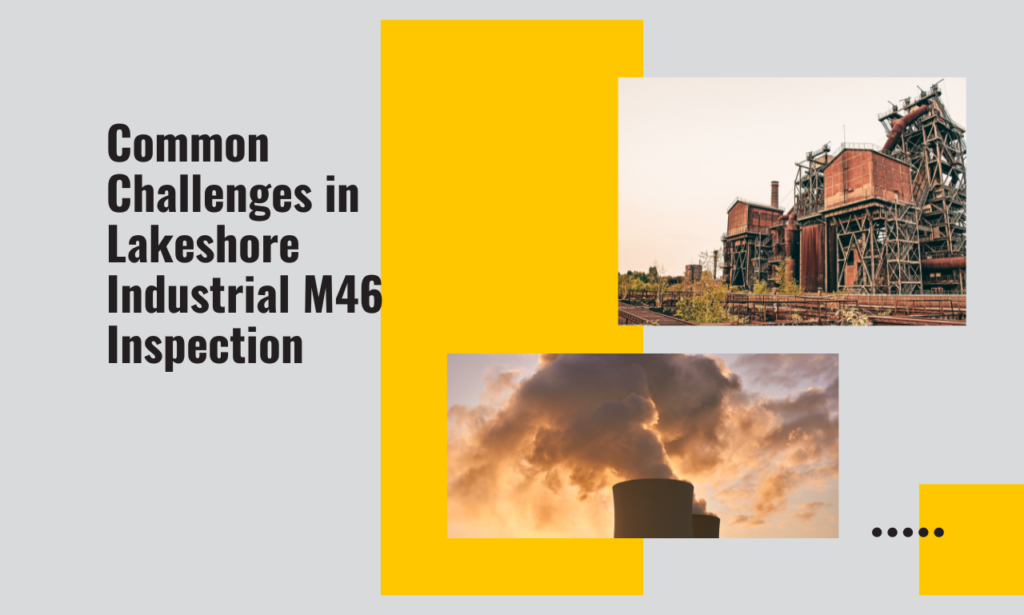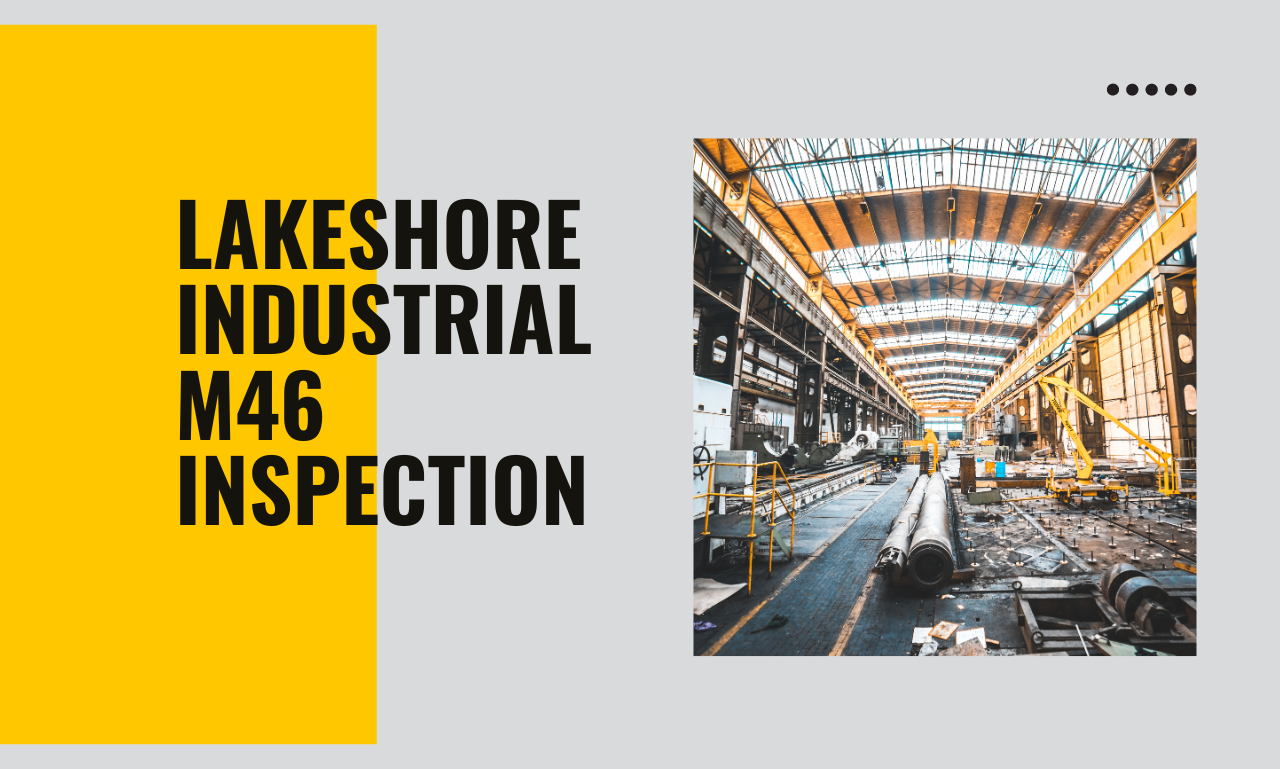- Introduction
- The Importance of Lakeshore Industrial M46 Inspection
- Key Components of the M46 Inspection
- Best Practices for Lakeshore Industrial M46 Inspection
- Common Challenges in Lakeshore Industrial M46 Inspection
- Future Trends in Lakeshore Industrial M46 Inspections
- Case Study: Implementing M46 Inspections at Lakeshore Industrial
- Conclusion
- FAQs about Lakeshore Industrial M46 Inspection
Introduction
Lakeshore Industrial’s M46 inspection process is a critical component in maintaining the safety, efficiency, and longevity of industrial equipment. Regular inspections help identify potential issues before they escalate into costly repairs or dangerous failures. This article provides a comprehensive guide to the Lakeshore Industrial M46 Inspection process, detailing its importance, the key steps involved, and best practices to ensure optimal results. Whether you are a facility manager, an industrial engineer, or a maintenance technician, understanding the M46 inspection can significantly enhance your operational protocols.
The Importance of Lakeshore Industrial M46 Inspection
Safety
Regular inspections are vital for ensuring the safety of both workers and equipment. Identifying and addressing potential hazards early can prevent accidents and injuries. This is particularly crucial in industrial environments where heavy machinery and complex systems are prevalent.
Efficiency
Efficient operations rely on well-maintained equipment. Inspections help identify areas where maintenance is needed, ensuring that machines operate at peak efficiency. This can lead to increased productivity and reduced downtime, ultimately boosting the bottom line.
Cost Savings
By catching issues early, inspections can prevent minor problems from becoming major, costly repairs. Proactive maintenance based on inspection results can extend the lifespan of equipment, reducing the need for frequent replacements and significant investments in new machinery.
Key Components of the M46 Inspection
Visual Inspection
The first step in the M46 inspection process is a thorough visual inspection. This involves checking for visible signs of wear and tear, corrosion, and other potential issues. Key areas to focus on include:
- Exterior Surfaces: Look for signs of rust, cracks, and other damage.
- Joints and Connections: Ensure all joints and connections are secure and free from leaks.
- Moving Parts: Check for signs of wear and ensure that all moving parts are properly lubricated.
Functional Testing
Functional testing involves operating the equipment to ensure it performs as expected. This step can help identify issues that may not be visible during the visual inspection. Key tests may include:
- Operational Efficiency: Measure the output of the equipment to ensure it meets expected standards.
- Sound and Vibration: Listen for unusual noises and measure vibration levels to identify potential issues with moving parts.
- Safety Systems: Test safety mechanisms to ensure they are functioning correctly.
Detailed Component Examination
After the initial visual and functional inspections, a more detailed examination of specific components is necessary. This may involve disassembling parts of the equipment to inspect internal components. Key areas to focus on include:
- Bearings and Gears: Check for signs of wear and ensure they are properly lubricated.
- Electrical Systems: Inspect wiring and connections for signs of wear, corrosion, or damage.
- Hydraulic and Pneumatic Systems: Check for leaks, wear, and proper operation of valves and actuators.
Documentation and Reporting
Documenting the findings of the inspection is a crucial step. Detailed reports help track the condition of equipment over time and provide a basis for maintenance decisions. Key features of the report should include:
- Condition of Components: Detailed descriptions of any issues found.
- Test Results: Data from functional testing.
- Recommended Actions: Suggestions for maintenance or repairs based on the inspection findings.
Best Practices for Lakeshore Industrial M46 Inspection
Use a Checklist
Using a standardized checklist can ensure that no part of the inspection process is overlooked. The checklist should be comprehensive, covering all critical components and systems of the equipment.
Schedule Regular Inspections
Establishing a regular inspection schedule is crucial. The frequency of inspections should be based on the equipment’s usage and the manufacturer’s recommendations. Regular inspections can help catch issues early and ensure consistent maintenance.
Train Inspection Personnel
Proper training for personnel conducting inspections is essential. They should be familiar with the equipment, understand the inspection process, and be able to identify potential issues. Ongoing training and certification can help maintain high standards of inspection quality.
Use Technology
Leveraging technology can enhance the inspection process. Tools like infrared thermography, ultrasonic testing, and vibration analysis can provide detailed insights into the condition of equipment. Integrating these tools into the inspection process can improve accuracy and efficiency.
Follow Up on Findings
Inspections are only as valuable as the actions taken based on their findings. Establish a system for tracking and addressing issues identified during inspections. This can involve scheduling maintenance, ordering replacement parts, or adjusting operational procedures.
Common Challenges in Lakeshore Industrial M46 Inspection

1. Inadequate Training
One of the most significant challenges is the lack of proper training for inspection personnel. Without a thorough understanding of the equipment and inspection protocols, inspectors may overlook critical issues, leading to undetected problems that can cause equipment failure and safety hazards.
2. Time Constraints
Industrial environments often operate under tight schedules, leaving limited time for thorough inspections. This can result in rushed inspections, where not all components are adequately checked, potentially missing early signs of wear or damage.
3. Lack of Standardization
Inconsistencies in inspection procedures can lead to variable results. Without standardized checklists and protocols, different inspectors may follow different processes, making it difficult to ensure comprehensive and consistent inspections across all equipment.
4. Insufficient Documentation
Proper documentation is crucial for tracking the condition of equipment over time. However, incomplete or inaccurate reporting can hinder effective maintenance planning and problem resolution, leading to recurring issues and inefficiencies.
5. Access to Advanced Tools
Not all facilities have access to advanced diagnostic tools like infrared thermography or ultrasonic testing. These tools can provide detailed insights into equipment condition, and their absence can limit the accuracy and effectiveness of inspections.
6. Resistance to Change
Implementing new inspection protocols or technologies can face resistance from staff accustomed to traditional methods. Overcoming this resistance requires effective communication and demonstrating the benefits of the new approaches.
Future Trends in Lakeshore Industrial M46 Inspections
The future of Lakeshore Industrial M46 inspections will likely see increased integration of advanced technologies such as artificial intelligence and machine learning for predictive maintenance. Drones and robotics may be employed for hard-to-reach areas, enhancing safety and efficiency. Additionally, real-time data analytics and IoT-enabled sensors will provide continuous monitoring, allowing for proactive issue detection and resolution. Virtual reality (VR) training programs could improve inspector proficiency and consistency, while digital twin technology could simulate equipment conditions for more accurate diagnostics and maintenance planning. These advancements promise to revolutionize the inspection process, making it more precise and effective.
Case Study: Implementing M46 Inspections at Lakeshore Industrial
Background
Lakeshore Industrial, a leading manufacturer of heavy machinery, implemented the M46 inspection process to enhance the safety and efficiency of its operations. The company faced challenges with equipment downtime and maintenance costs, prompting the need for a more structured inspection process.
Implementation
Lakeshore Industrial developed a comprehensive inspection checklist and trained its maintenance team on the M46 inspection process. The company also invested in advanced diagnostic tools to enhance the accuracy of inspections.
Results
The implementation of the M46 inspection process led to significant improvements in equipment reliability and operational efficiency. Key results included:
- Reduced Downtime: Regular inspections helped identify and address issues before they led to equipment failures, reducing downtime by 25%.
- Cost Savings: Proactive maintenance based on inspection findings led to a 15% reduction in maintenance costs.
- Enhanced Safety: The thorough inspection process helped identify and mitigate potential hazards, leading to a safer working environment.
Conclusion
The Lakeshore Industrial M46 Inspection process is a vital tool for maintaining the safety, efficiency, and longevity of industrial equipment. By following a structured approach to inspections, using advanced diagnostic tools, and acting on inspection findings, companies can significantly enhance their operational protocols. Regular M46 inspections not only prevent costly repairs and downtime but also ensure a safer working environment for all. Implementing these best practices can lead to substantial improvements in productivity and cost-efficiency, making the M46 inspection an indispensable part of industrial maintenance strategies.
FAQs about Lakeshore Industrial M46 Inspection
1. What is the M46 Inspection?
The M46 Inspection is a comprehensive process used by Lakeshore Industrial to assess the condition and performance of industrial equipment. It includes visual inspections, functional testing, and detailed component examinations to identify and address potential issues, ensuring safety, efficiency, and longevity of machinery.
2. How often should M46 Inspections be conducted?
M46 Inspections should be conducted regularly based on the equipment’s usage and the manufacturer’s recommendations. Typically, high-usage machinery may require quarterly inspections, while less frequently used equipment might be inspected biannually or annually to ensure consistent maintenance and early issue detection.
3. What tools are used in M46 Inspections?
M46 Inspections utilize a variety of tools, including visual inspection tools, infrared thermography, ultrasonic testing, and vibration analysis equipment. These advanced diagnostic tools help provide detailed insights into the condition of machinery, ensuring accurate and effective inspections.
4. Who performs M46 Inspections?
M46 Inspections are conducted by trained maintenance personnel or industrial engineers familiar with the specific equipment and inspection protocols. Proper training and certification ensure that inspectors can accurately identify potential issues and recommend appropriate maintenance actions.
5. What are the benefits of regular M46 Inspections?
Regular M46 Inspections offer numerous benefits, including improved equipment safety, enhanced operational efficiency, reduced downtime, and cost savings from proactive maintenance. By identifying issues early, these inspections help extend the lifespan of machinery and ensure a safer working environment.

